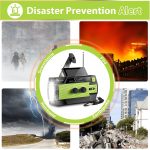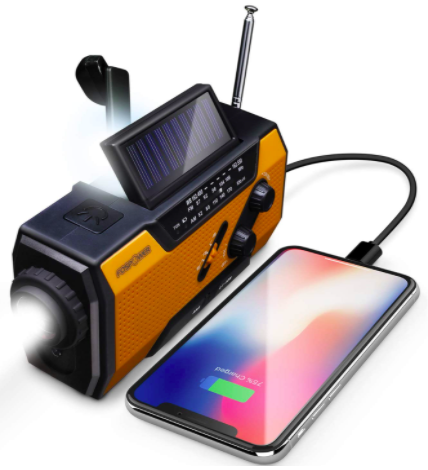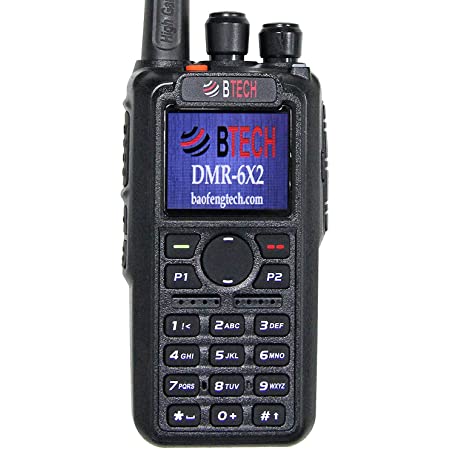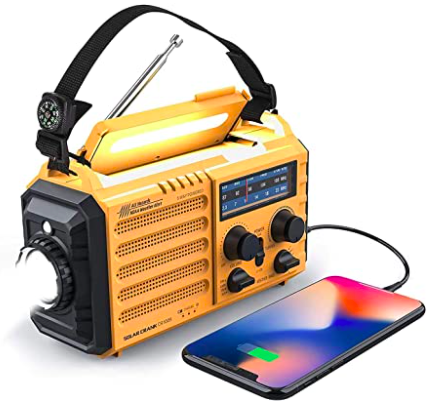Top Tips on Choosing the Best Survival Radio

When you’re about to start a camping trip, you may have to carry several things, mainly for your safety as you’re going to deal with the wild. Your main purpose should be to know the latest weather conditions and potential arrival of any disaster, and if possible, let your loved ones or even strangers know where you are and how to find you, if you’re lost or are injured and unable to move further. And for this purpose, there can be hardly any match to a survival radio. When you find yourself in a disaster, your survival radio will be more helpful than your smartphone. Since they will always enable you to get a signal and radio waves travel farther than LTE, radios are more dependable than smartphones, as smartphones can be jammed or fail but your radio can connect you to the world.
But there are so many survival radios out there on the market from a compact hand-crank unit to a larger solar-powered radio. So, how do you buy the best one for you? Here are a few tips to help you out.
Types of Survival Radios
Every camping situation and every camper are different. Although there are so many types of survival radios, only one or a few more are suitable to you and your situation. Hence it’s worth knowing the various types of survival radios and then deciding which one is the most suitable to you.
Technically speaking, any radio can turn into a survival radio in case of an emergency. As long as your radio can pick up AM and FM broadcast signals, you can tune into broadcasts. However, when you’re focused on survival, having a proper survival radio, one that has the tools and radio wavelengths you require in an emergency, is more important.
Although survival radios have more or less the same features and abilities, there are mainly two different kinds of these radios: AM/FM and weather alert. Plus, there are many other types too. Each of these has its own pros and cons, learning about which you can decide which one is the best for your survival kit.

AM/FM Survival Radios
Also often known as just emergency radios, AM/FM survival radios can pick up AM and FM radio frequencies. They’ll let you know the latest information when you’re caught in a developing situation and enable you to access local radio stations as well as those that are farther away. This type of survival radio is generally used when there is a power failure. Hence they don’t always have a lot of bells and whistles.
A standard AM/FM survival radio comes with multiple power options such as a solar charging, hand crank and traditional wall outlet or battery power. This makes sure you can use your radio even if you cannot access electricity. These survival radios may also come with some survival add-ons such as an emergency alert sound, extra battery power and a built-in flashlight.

Weather Alert Survival Radios
This is a more specialized type of radio for outdoors. They can broadcast alerts from NOAA, imparting crucial information about weather in your area. And if you choose a weather alert radio that is equipped with Specific Area Message Encoding (SAME) capability, you can even fine-tune your alerts. Many weather alert radio models even enable you to tune into local radio stations for updates and alerts beyond the weather. This versatility of these radios can be particularly useful in a survival situation.
Moreover, these radios usually include all of the features that AM/FM survival radios come with. Thus, you’ll also find models with emergency lights or alerts, flashlights, backup battery power and so on.

What are Ham, CB, FRS, GMRS and MURS Radios?
Other than the two basic types mentioned above, there are a few other types of radios that can be extremely useful in emergency situations when you are in the wild.
Ham: Ham or Amateur Radio is a handheld device that uses over-the-air radio frequencies to communicate messages for non-commercial use. Other than emergency communication they are also used for private recreation, contesting and wireless experimentation.

Citizens Band (CB): CB was pretty popular around the 70s, but lost its popularity recently as it’s unreliable, congested and often the language can get quite rude. Still, it’s used by some truckers and offroading clubs. You don’t require a license to operate CB.
Family Radio Service (FRS) and General Mobile Radio Service (GMRS): Although these are two different types of radios, they share almost same frequencies, can communicate with each other on most of them, and the FCC changed the rules in 2017 so as to make them even more identical. Hence, popular radios available in this category can normally do both FRS and GMRS. RadioShack store proposed the FRS block in the 90s so families could purchase and use walkie-talkies, whereas GMRS is a type of business equivalent of FRS and was more useful to farmers and businesses with their employees scattered around a small area. GMRS needs a license to use, whereas FRS doesn’t need a license.
Multi-Use Radio Service (MURS): Created in 2000, MURS was not very popular, but recently some products built with MURS in the background can be paired with a phone to send short text messages without cell phone network.

Points to Consider
While deciding which survival radio is right for your emergency kit, it’s essential to consider how the radio works as well as how functional it is.
Several radios for outdoors come with multiple operation methods. However, it’s common for a radio to operate on hand crank, solar power and batteries. Thus if one method fails, you have other options that you can try. It’s best to choose a radio that can work even if you have access to nothing. One that can be powered by hand cranking and solar charging is the best. Electricity, batteries and even USB charging can all be useless in an emergency.
Look also for other useful functions a survival radio offers. The more functionality it offers, the more you can organize your emergency gear. Some of the radios are available with emergency signals and sirens, multiple flashlights, and even backup power sources so you can recharge devices like your smartphone, flashlights and more. Other radios are more basic and work just as radios.

Do You Really Need a Radio for Outdoors?
Absolutely yes! When you want to take the feel of wilderness, you may be anytime caught in an emergency. A radio for outdoors is a crucial device when a disaster strikes. It can quickly turn up into your sole connection to the important information, latest news and status of your local area. Your other devices may fail, but your survival radio hardly can.
Survival radios can do much more for you than just offering connectivity and information. Along with giving you updates about weather and emergency situations, these tools can offer you other perks, such as:
- Multiple survival tools in one place, such as SOS lights and alerts, flashlights and backup battery power
- Multiple methods of charging such as hand cranking, solar power and more
- A renewable power source that provides USB charging for other electronics and high-power devices such as smartphones, tablets, flashlights and more
- An ability to carry updates wherever you go in a compact and lightweight device
- Freedom from being dependent on electricity or cell service when they are down or unavailable

We hope that this information will help you make a more educated decision while buying your survival radio. You can even take help of a survival guide and make the best purchase. All the best!
















